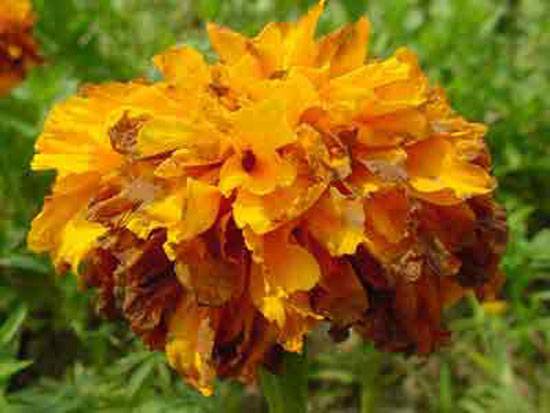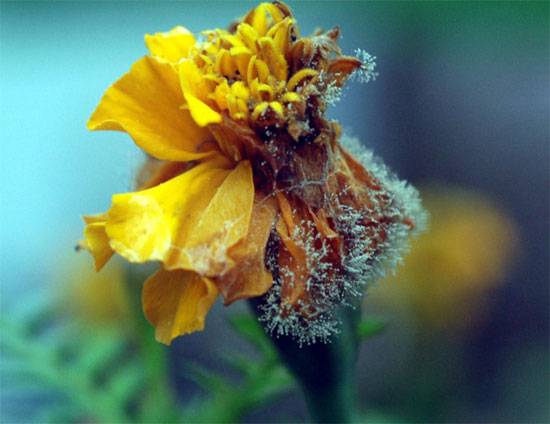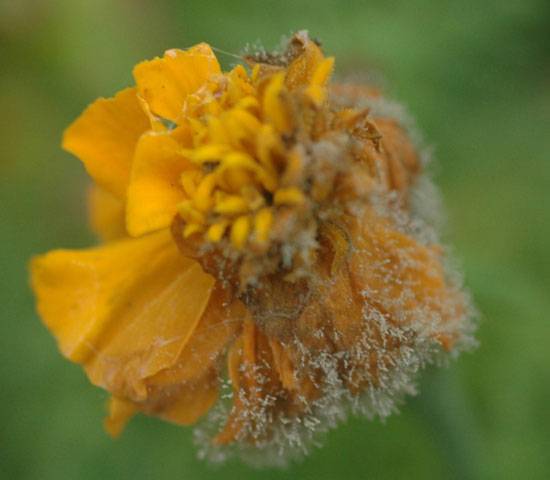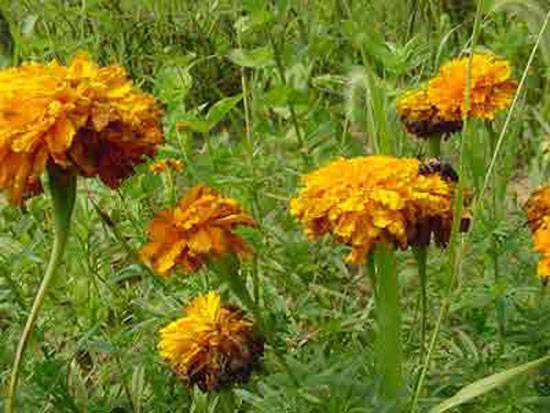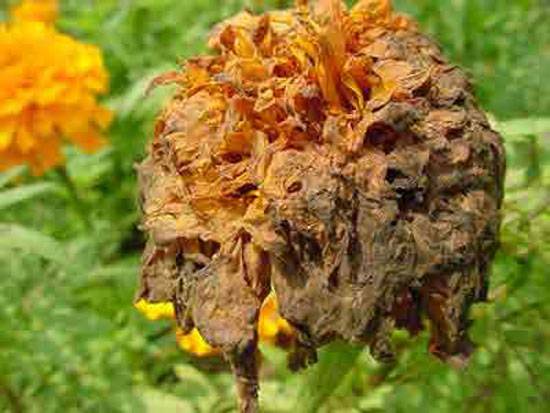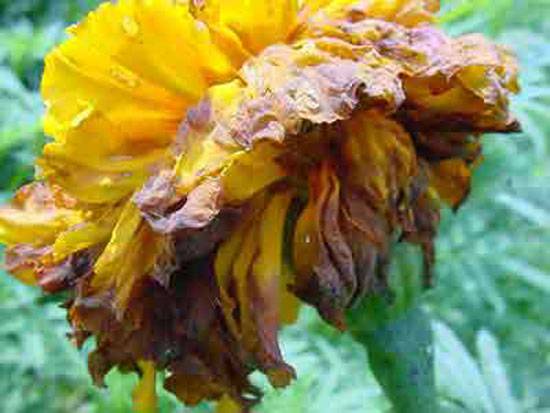Botrytis, caused by Botrytis cinerea, is a fungal disease that affects marigolds, particularly during humid, wet weather. It damages flowers and foliage, reducing the overall aesthetic and market value of the plant. Here’s a quick overview of the disease, its symptoms, and management:
1. Causal Organism
- Botrytis cinerea is the fungus responsible for causing botrytis blight in marigold.
2. Symptoms
- Flowers turn papery brown and develop gray, fuzzy fungal masses.
- Senescing (aging) flowers are particularly vulnerable.
- Tan to brown spots with a target-like appearance form on the leaves, often where fallen flowers rest on the foliage.
3. Favorable Conditions
- Botrytis thrives in high humidity (>93%) and temperatures between 12–30°C, with optimal growth at 15–20°C.
- Prolonged wet, cloudy weather encourages the spread of this disease.
4. Management
- Cultural Practices: Avoid wetting flowers when watering and ensure proper plant spacing for good air circulation.
- Fungicide Use: Apply fungicides like iprodione, chlorothalonil, or thiophanate-methyl as soon as symptoms appear. Always follow label guidelines for dosage and safety.
By adopting these practices, you can minimize the impact of botrytis and keep your marigold crops healthy.
